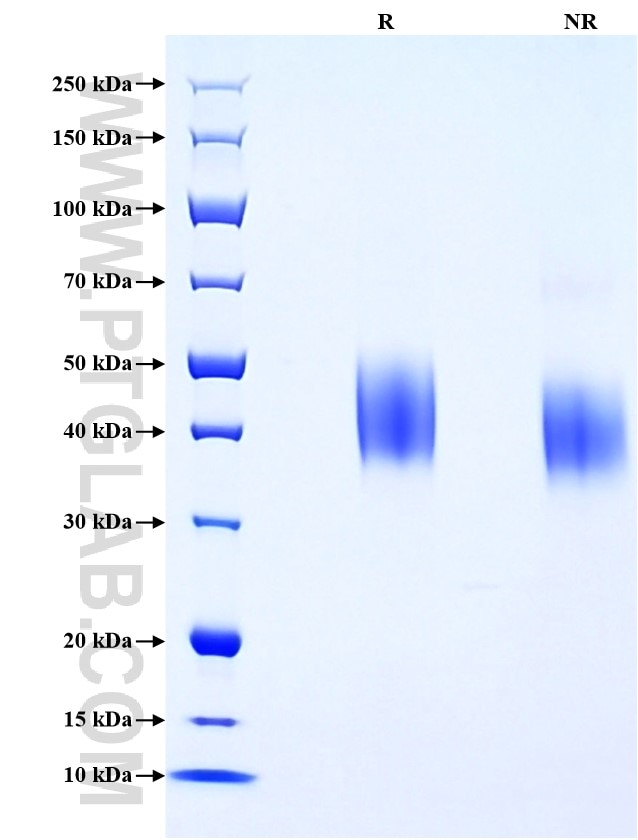Recombinant Human SLAM/CD150 protein (His Tag)
Species
Human
Purity
>90 %, SDS-PAGE
Tag
His Tag
Activity
not tested
Cat no : Eg1702
Validation Data Gallery
Product Information
| Purity | >90 %, SDS-PAGE |
| Endotoxin | <0.1 EU/μg protein, LAL method |
| Activity |
Not tested |
| Expression | HEK293-derived Human SLAM protein Ala21-Pro237 (Accession# Q13291-1) with a His tag at the C-terminus. |
| GeneID | 6504 |
| Accession | Q13291-1 |
| PredictedSize | 25.4 kDa |
| SDS-PAGE | 38-50 kDa, reducing (R) conditions |
| Formulation | Lyophilized from 0.22 μm filtered solution in PBS, pH 7.4. Normally 5% trehalose and 5% mannitol are added as protectants before lyophilization. |
| Reconstitution | Briefly centrifuge the tube before opening. Reconstitute at 0.1-0.5 mg/mL in sterile water. |
| Storage Conditions |
It is recommended that the protein be aliquoted for optimal storage. Avoid repeated freeze-thaw cycles.
|
| Shipping | The product is shipped at ambient temperature. Upon receipt, store it immediately at the recommended temperature. |
Background
Signaling lymphocytic activation molecule (SLAM, also known as SLAMF1 or CD150) is a glycoprotein found on the surface of T, B, natural killer, and dendritic cells. The extracellular domain of CD150 serves as a receptor for the measles virus, and CD150 acts as a co-activator on T and B cells (PMID: 11486275). SLAM is constitutively expressed on peripheral blood memory T-cells, T-cell clones, immature thymocytes and a proportion of B-cells, and is rapidly induced on naive T-cells after activation (PMID: 7617038). SLAM is involved in T cell stimulation and cytokine production, and may play an important role in the regulation of immune responses to pathogens (PMID: 30366106).
References:
1. Wang N. et al. (2001). Immunogenetics. 53(5):382-394. 2. Cocks BG. et al. (1995). Nature. 376(6537):260-263. 3. Yigit B. et al. (2019). Clin Immunol. 204:3-13.

